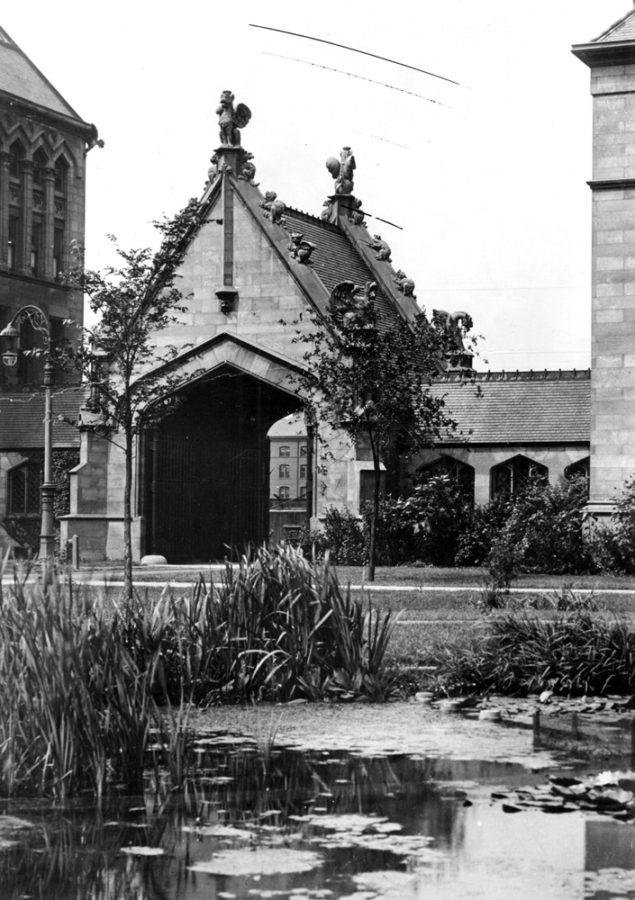[img id=”80331″ align=”alignleft”] The year before I arrived at my high school in California, there was a notable incident. Until that year, the Honors U.S. History class had performed an annual Civil War battle reenactment on the field, divided between the opposing “troops” of the Confederacy and the Union. During the year in question, the teacher attempted to raise awareness of the event by having several of his students march across the gymnasium during an all-school assembly, one group with a Union flag and the other with a Confederate one. The assembly passed peaceably enough, but within days the school was in an uproar: How dare they show the Confederate flag to the community without proper warning?
The display of the Confederate flag, the critics argued, was excessively upsetting to black students because of the association between slavery and the Confederacy. These critics, composed primarily of groups that classified themselves as “multicultural,” demanded an apology from the instructor. The teacher’s supporters countered that it was a preview of a historical reenactment, and that history should not be prefaced with apologies for its more negative facets. Speeches were made and special meetings were held, culminating in an apology by the teacher. Most of the student body remained quiet and watched the controversy from the backseat.
I recognize that this is an extreme example and that California is a very different place from Illinois. But it serves to illustrate a greater point: Political correctness is a powerful tool.
The goal of political correctness is, ultimately, to avoid offending anyone. While one cannot be asked not to be offended by something, there is a point at which one must ask what another’s intentions are. Did the history instructor wish to upset black members of the community? No—he sought only to recount a past battle. Be they jokes, old-fashioned phrases, or un-qualified histories of darker epochs, most things deemed politically incorrect are not intended to wound feelings. Yet it is exceedingly rare that those caught in the sweeping tide of political correctness take such things into account in the final reckoning of perceived offenses.
Every day it seems that more things are christened offensive and, therefore, intolerable; the distinction between offensive and unjust is becoming increasingly blurred. Political correctness has the horrible tendency to snowball, accumulating more and more terms on its blacklist, something that I saw firsthand in high school.
Each year, without fail, several political correctness controversies arise: a salsa dancer wearing a sombrero and a poncho at an assembly, a “punks versus thugs” spirit day, a clip from the movie Dodgeball that included a tongue-in-cheek slur referring to the Chinese—all potentially offensive, but none intended as such, and all, if viewed with a certain sense of humor, at the very least easily forgivable. But at every turn there were more controversies and a larger, increasingly verbose field of eggshells to tiptoe across.
The worst part was that those who most opposed the ruckus made about these “scandals” were afraid to speak up, convinced that if they did, they would be branded as racist, sexist, or ignorant. This fear grew overwhelming as careless students who did not heed the precedent of completely avoiding anything that might offend anyone were defamed and, on occasion, ordered by the administration to apologize in front of the school. To avoid this, there was only one easy solution: silence. And this is where it became most troubling, as students bowed to a forced silence—a de facto censorship.
Things that are offensive are not necessarily wrong; that which upsets should inspire, rather than stifle, discussion. Yet political correctness advocates often find that it is a useful weapon against things they simply do not like: Few will fight back when faced with the threat of villification.
My high school may be unusual in the degree to which it pursued its hypersensitive doctrine, but it is by no means an exception, nor was it always as fiercely unaccommodating as it became during my years there. Each controversy bellowed by an angry minority to a mute majority threw a log upon the fire.
There is a fine line between polite sensitivity and oppression. It is hard to say when something is an overreaction or when the point of excess and oversensitivity is breached, but there is undoubtedly such a point. Perhaps it is when people begin to be afraid to express their thought for fear of punishment. The lesson to be learned from my high school is this: It is crucial to stop political correctness before it becomes censorship, and though it may not yet have become so here, it is a threat that must always be watched.
Claire McNear is a first-year in the College majoring in international studies and economics. Her column appears on alternateTuesdays.






